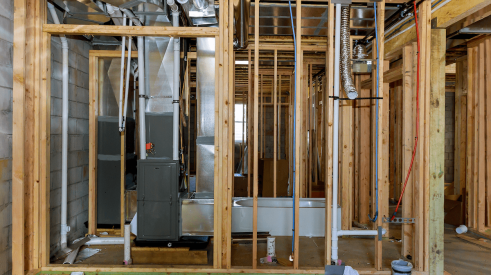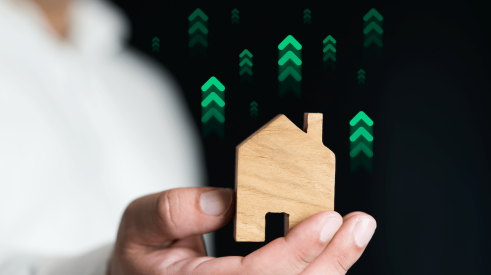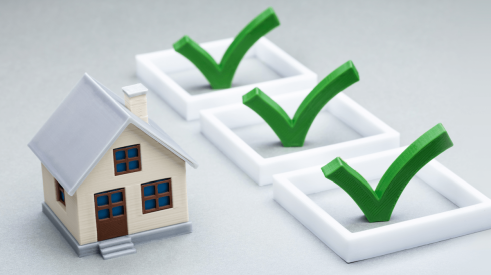This article was originally published in November 2011 and updated for accuracy in January 2019.
Let’s start with a basic fact: a green home can be sold to anyone. However, homebuyers are a diverse group of individuals, and there is no single way to sell green successfully. For this reason, builders and their sales teams need to identify what green home benefits are most compelling to their potential buyers.
Below are some of the “tricks from the trenches” from builders and remodelers participating in the NAHB Research Center’s National Green Building Certification Program (now Home Innovation Research Labs' National Green Building Standard) and selling third-party certified green homes. While some of the basic techniques are relevant to new-home marketing in general, each has its own twist on how to specifically hone in on what makes a green home different, special, and marketable.
What do buyers really want?
Over the past few years, there have been numerous surveys of potential homebuyers to ascertain what green features buyers want and, more importantly, which ones they are willing to pay extra for. Most surveys conclude that homebuyers are interested in energy-efficiency features.
Is energy efficiency all that matters to consumers?
The short answer to this question is no. Energy efficiency is a very tangible benefit that consumers recognize as valuable. The energy-efficiency benefit is easily measured by the operational savings that the buyer will realize, but consumers are looking for more than homes that are efficient, and a green-certified home will deliver those benefits that consumers are seeking.
Skeptical builders may object and note that their buyers are not asking for “green.” It’s true, few homebuyers march into a sales center and declare that they are looking for a green home. The problem is that green is too vague, overused, and often meaningless, and consumers know exactly what they want. They just don’t necessarily call it green.
That’s why honing your sales pitch and the language you use is critical. Other consumers may assume that a home tagged as green will cost more than they can afford. It doesn’t mean that select green features aren’t desirable, just that consumers may be more interested in the specific benefits as opposed to a blanket categorization of features being green. The most important step in selling a green home is to convey to the buyer what makes your home green and how its environmental impact is rated.
Homebuyers respond to diverse sales points
Builders often want to sell their homes with a single marketing message. Unfortunately, research shows that gender, geography, age, and educational level all impact which green marketing message will resonate best. Some examples:
• Energy efficiency, which results in lower operating costs, may be a difficult benefit to sell in neighborhoods where utility costs are low.
• Younger buyers typically care more about the potential environmental impact of their home and respond more favorably to information about features that reduce the home’s environmental footprint.
• Women are more influenced by green features than men, and they often respond very positively to homes that have “show and tell” visual aids and interactive displays.
Sell the benefits of your green home, not the features
In selecting a new house, most buyers have a few simple goals in mind. They aren’t necessarily looking for specific products, technologies, or features, but instead the advantages they will enjoy from the features. Therefore, don’t tout a tight thermal envelope. Instead, explain how the home will be warmer in the winter and cooler in the summer because a tightly sealed building eliminates drafts and unwanted pollutants.
Buyers want their families to be comfortable in their home. Likewise, don’t automatically flaunt those low-VOC finishes or the MERV 8 air filters. Instead, boast about the improved indoor air quality with reduced pollutants and better ventilation. Buyers want their families to have a healthy home.
Green homes provide many benefits to the occupants and the community. However, when surveyed, buyers consistently rate the following three categories of benefits as the most important:
1. A healthy place to live — Homes are healthier places to live for their occupants when they are dry, ventilated, and the contaminants within the building envelope are limited. When surveyed, these are the features that consumers said they were willing to pay a premium for even if it was difficult to quantify how fast their investment might pay them back over time. Builders should be prepared to specifically identify the practices and products that help contribute to the home being a healthier place to live.
2. Lower operating costs — Energy- and water-efficient homes cost less to operate. Most consumers are willing to pay more for these features if their investment will pay them back over time. Consumers will find it useful if builders can calculate the savings a typical consumer might expect, as well as the return on investment. However, be mindful of the expectations such statements can create for consumers, and don’t unintentionally imply any guarantee of savings. Green homes include features and practices to make them more durable and require less maintenance, which also reduces operating costs.
3. Contributes to a sustainable lifestyle — Buyers are seeking homes and communities that improve their quality of life. These buyers are looking for features that increase their home’s durability and make it easier to maintain. They want neighborhoods where they can walk to community resources. They’re interested in building practices that are good for the environment. However, some may not be willing to pay a premium for those features without a payback on their investment, so look to incorporate those green features that do not significantly increase the consumer’s bottom line. Be prepared to specifically identify the practices and products that help a home contribute to a more sustainable lifestyle. Green-certified homes are designed and built to have a smaller environmental impact than a code-minimum home. For some buyers, a reduced environmental impact is an important selling point, but your sales staff should be trained to reveal if this is a motivation of your buyers.
Train your sales staff
Too often, builders who construct high-performance homes rely on sales staff and Realtors who are not familiar with the home’s green attributes and related benefits to make the case for buying a green home. Make sure your sales staff understands the features in the home that contribute to its performance, but also be sure that they are selling the benefits of the features and not the features themselves. Many green practices and products need explanation, such as advanced framing, thermal barriers, R-value, low-E windows, and air infiltration.
At a minimum, the sales staff should understand the basics of these practices and then know where to direct the buyer for more detailed information that explains green technologies and their benefits. Remind staff to discuss those features that increase the home’s durability, as those are often neglected in the sales pitch.

Why third-party certification matters
An independent, third-party green certification means that your buyers do not have to take your word that the home is a high-performance home. In the current housing market, where many buyers are fraught with anxiety, third-party certifications have never been more important to provide credibility to the builder and assurance to the buyer.
Numerous surveys and research studies demonstrate that independent, third-party verification and certification provides credibility and assurance that a marketer’s claims are truthful and accurate. In fact, a recent opinion survey by Cone Communications found that 80 percent of respondents believed that certification by a third-party organization is “important in providing oversight to ensure environmental messaging by companies is accurate.”
Comply with the Federal Trade Commission’s Green Guides
The FTC recently issued proposed revisions to its Guides for the Use of Environmental Marketing Claims (Green Guides) to help marketers avoid making deceptive marketing claims. Familiarize yourself with the Green Guides and use them so that you don’t run afoul of the FTC.
In general, the FTC wants environmental claims to be specific, quantified, and substantiated. Builders should not make inflated or unsubstantiated environmental claims or deceptively use certifications and labels.
For information about having a home Green Certified to the National Green Building Standard by the NAHB Research Center and marketing that certified home, visit www.nahbgreen.org/certification.
Home Innovation Research Labs (formerly the NAHB Research Center) was founded in 1964 as a wholly owned, independent subsidiary of the National Association of Home Builders. Originating as a small product testing laboratory, we have since grown to become a full-service market research, consulting, product testing, and accredited third-party certification agency dedicated solely to issues related to the home building industry.
Advertisement
Related Stories
Sustainability
Which Green Building Practices Are Home Builders Using Most?
A recent report reveals which green-building practices are most popular among single-family home builders and remodelers
Sustainability
Study Shows More Home Builders Adopting Green Building Practices, Products
A new study finds a marked increase in the number of home builders embracing eco-conscious, sustainable practices and products
Codes + Standards
Public Comment Period Opens for 2024 National Green Building Standard Update
The 45-day public comment period opened Aug. 18, and comments must be submitted by Oct. 2, 2023







